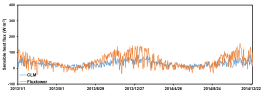Good afternoon,
I want to get the dataset for the 1980-2000 period. I used compset is "I1850Clm50Sp (--run-unsupported)",
and I set the run_type = startup; run_startdate = 1980-01-01; stop_option = nmonths; stop_N = 12; run_stopdate = 20010101;resubmit = 19; datm_clmncep_yr_start = 1980; datm_clmncep_yr_end = 2000; clm_accelenrated_spinup = off; clm_force_coldstart = on; job_walkclock_time = 20:00:00; I didn't change any value except these.
The system shows that successfully case. build and case. submit, but there's no output except "case_1850.cism.initial_hist.1980-01-01-00000.nc".
Can you help me tell what the problem is?
Thanks in advance.
I want to get the dataset for the 1980-2000 period. I used compset is "I1850Clm50Sp (--run-unsupported)",
and I set the run_type = startup; run_startdate = 1980-01-01; stop_option = nmonths; stop_N = 12; run_stopdate = 20010101;resubmit = 19; datm_clmncep_yr_start = 1980; datm_clmncep_yr_end = 2000; clm_accelenrated_spinup = off; clm_force_coldstart = on; job_walkclock_time = 20:00:00; I didn't change any value except these.
The system shows that successfully case. build and case. submit, but there's no output except "case_1850.cism.initial_hist.1980-01-01-00000.nc".
Can you help me tell what the problem is?
Thanks in advance.


